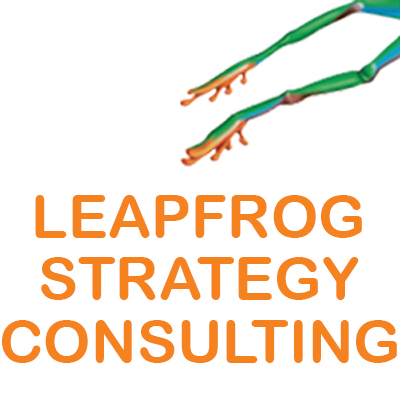Gurugram, Haryana, 17 January 2022
Leapfrog Strategy Consulting’s founder semiotician, Hamsini Shivakumar recently compiled an e-book, Branded Content: What’s Culture Got To Do With It. The book is downloadable <here – https://www.buzzincontent.com/ebook.php > This book, authored for Buzz In Content, is intended as a guide for understanding the Hows and Whys of Branded Content.
The team at Leapfrog Strategy, led by Hamsini Shivakumar, had already published around 75 white papers or articles, each of which took research and analyses of different Branded Content campaigns; this translated into a phenomenal amount of research around branded content. As a semiotics expert, Hamsini Shivakumar explains, “Branded Content is a fairly new concept without proper definition and rules. It is, more often than not, misplaced with traditional advertising. But a growing number of content creators or artists, if you will, are learning by doing. The aim of my book ‘Branded Content: What’s Culture Got to do with it?’ is to widen perspectives and deepen the knowledge of content practitioners, and that, I hope, will enrich the ecosystem of content creation.”
About the book, the team of semioticians say, “In this book, we look at content from a cultural lens to produce structured knowledge on the topic. Our approach is part theory and part application which means that while examining the existing literature on the topic, we also substantiate it with contemporary examples.”
A representative of Leapfrog Strategy Consulting, a semiotician herself, explained the journey of Branded Content and how cultural discourse is the missing part that helps put things in place.
Content is key to deep engagement
The ecosystem of content creation has seen a drastic change in terms of audience interaction since the onset of the digital marketing boom. Content has long been looked upon as the product of the advertising process and not a part of it. Traditional advertising accounts for creation, production, distribution and the measurement of the effectiveness of the content but they overlook what stands in the heart of this gigantic process- content itself. Content has the power to drive conversations, evoke emotions and hence have a potential impact on the audience. Thus based on its execution, content can form the basis of a deeper engagement for brands.
And Then Brands Turned Into Publishers
Earlier marketers and brands were mere investors of media channels that produced content for the audience. These gripping channels created stuff that kept their consumers engaged and always anticipating for more. Hence, in between that when advertisements popped up, the audience watched that as well since it lowered their viewing cost. But this traditional method of advertising is not piquing the interest of the people anymore.
Brands have also realised that with the advent of social media and digital marketing, their need to market themselves goes way beyond the scope of conventional media channels. Hence, they have introduced the idea of IMC or Integrated Marketing Communication. These concepts converge with a greater importance being given to the brand vis-à-vis product and the need to build brands via a multiplicity of touchpoints. With the help of Integrated Marketing Communications, marketers have started directly engaging with the audience via the content that they are consuming. In this way, brands can bring light to their visions and worldviews and build real-time connections with their audience.
With investment in Integrated Marketing Communication, one can say that marketers have turned into quasi-publishers and content creators but have not yet become full-fledged content creators like a media channel would be.
Content Creation In Various Social Media
Social media can be given a lot of credit for creating a large number of content creators. A huge amount of impetus lies on them, for completely reconfiguring the way marketers, publishers and content consumers are looked upon. The audiences are content consumers and creators, and marketers are advertisers and creators both. Hence, media channels have taken this situation to their advantage. They have now started creating mediums and platforms via which they can direct the relevant audience to their news, opinions, stories, etc.
What’s Culture Got To Do With It?
In such a situation, it is of paramount importance that the brand comprehends the impact of culture on its content. Because these platforms give them a unique space to interact with their consumers which are aligned with their vision, directly. Culture helps their audience understand what the brand stands for, especially in terms of sensitive issues, since we already mentioned earlier that content can drive essential conversations and mold opinions.
Branded Content: What’s Culture Got To Do With It was launched on December 17th at the BuzzinContent Awards.
To study how cultural discourse can shape the thinking of your audience, and how to produce content that aligns with culture, download the e-book from https://www.buzzincontent.com/ebook.php
To learn more about how semiotic thinking can be applied to brands and cultural lens to content, contact Hamsini Shivakumar at email to [email protected]
Leapfrog Strategy is a brand strategy consulting firm with cutting edge expertise in semiotics. The team helps clients devise an edgy strategy for brands, analyses contemporary trends and content and the role they play in brand engagement. To know more about Leapfrog Strategy Consulting, visit – https://in.linkedin.com/company/leapfrog-strategy-consulting
Contact: Leapfrog Strategy Consulting Pvt Ltd
Email: [email protected]

